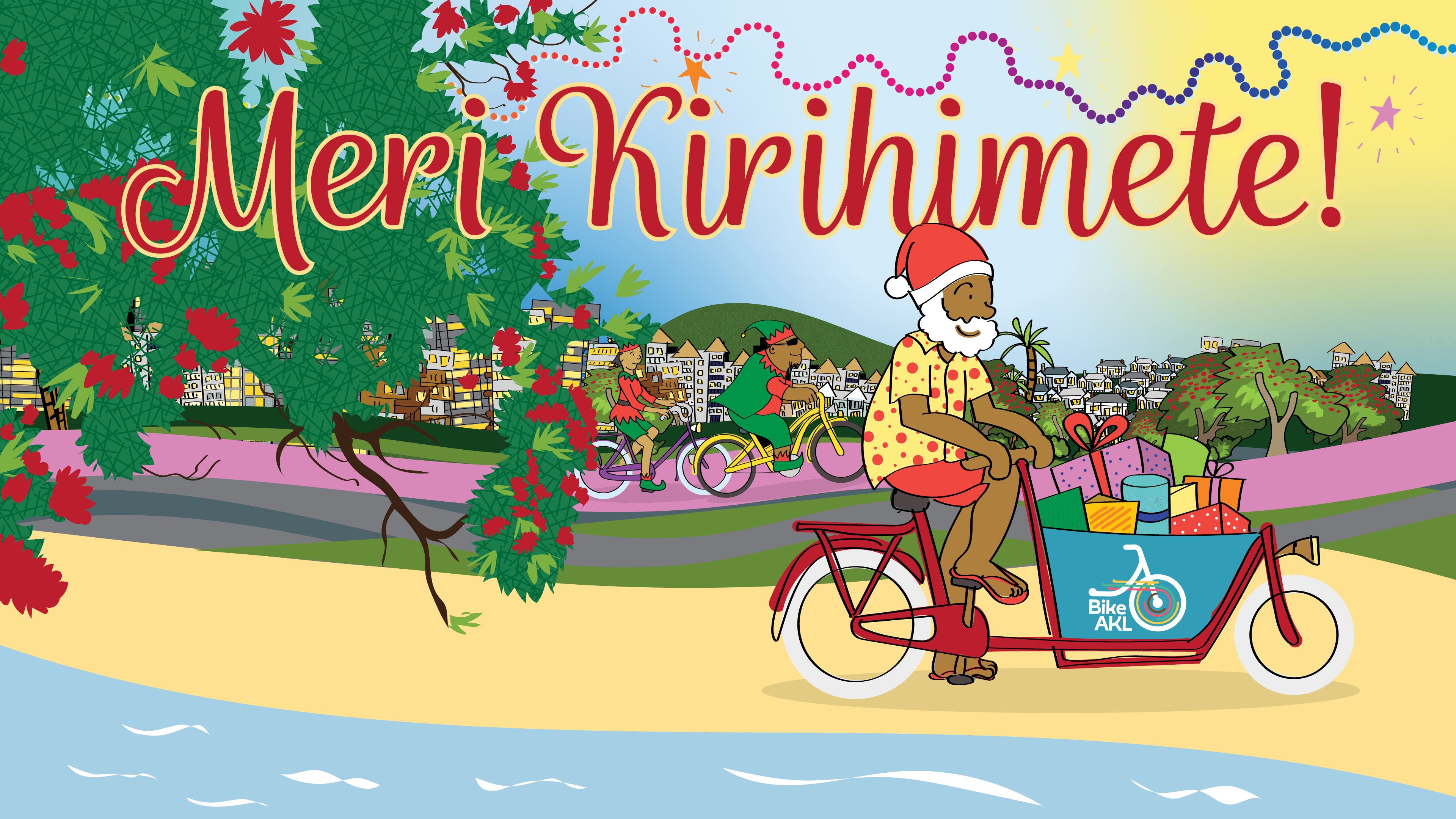Depending how hard you’ve worked report cards either generate feelings of pride or wanting to hide it from your parents. In this blog, the Bike Auckland Infrastructure team give their assessment of how well bike infrastructure is doing.
There is cause for celebration as more cycleway projects came to completion and improvements made in the past year. With more in the starting blocks, Auckland is inching closer to prioritising more active modes of transport. It is worth noting, some of these projects were conceived five years ago as part of the Urban Cycleway Programme.
However, there is real concern Auckland’s cycling future is being built only through high-cost projects. We need to do more on our existing streets, rather than try and build our cycleways only where they have no impact on car drivers.
With that in mind, here is our assessment of the big cycleway projects around the isthmus.
Tamaki Drive Cycleway
Tamaki Drive cycleway was recently formally opened. The history of how a proposed shared path was turned into a separated bikeway was discussed in more detail in a recent blog. The project remains a great example of how people power can change a hum-drum proposal into something a lot better.
There’s still room for improvement, for example, the traffic signals at the Ports of Auckland entry have woefully bad signal phasing for riders and pedestrians.
Ports of Auckland, albeit for quite different claimed reasons, had argued that the cycleway should have been bridged over the port’s entry. This might have been a better outcome, it would have added another couple million dollars to the project.
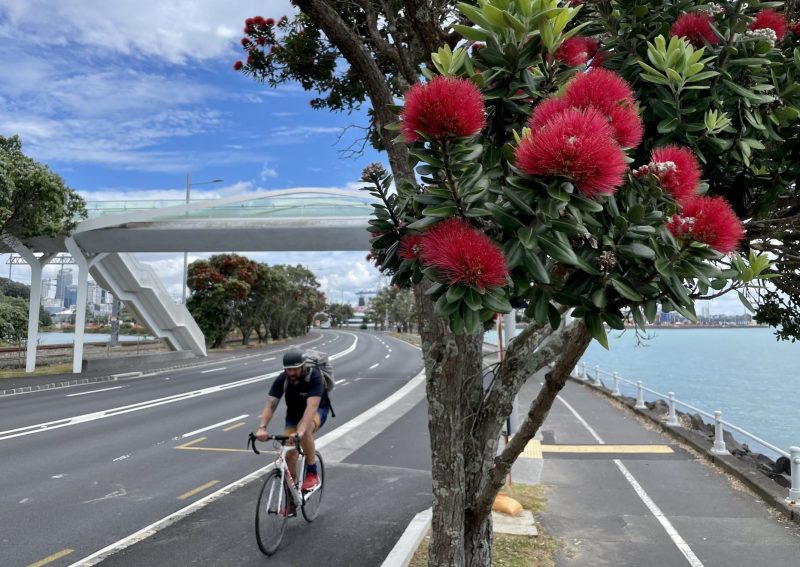
More on Tamaki Drive cycle path
The first and last sections at Orakei Peninsula and at Ngapipi Bridge have started construction. The middle section will be an extensive elevated bridge / boardwalk structure across the bay to Ngapipi / Tamaki Drive intersection.
This is still going through approvals, so it will sadly take at least another 2 years or so before the route is built and finally seamless from the City Centre to Glen Innes.
By then it will be some 9 years since the project was announced! We are talking to AT about what possibilities there are for doing some interim improvements on Ngapipi Road in the meantime.
Glenn Innes to Orakei peninsula link
The new path, Te Ara Ki Uta Ki Tai (the path of land and sea), is now open all the way from Glen Innes Town Centre to Orakei peninsula. Numbers will balloon once stage four is completed and the bikeway connects all the way to the central city.
In fact, we would have loved to have seen it wide enough to get separate walking and cycle sections, as is now best practice. This concept was still a bit “out there” at the time it was planned 5-6 years ago. We ask everyone to “share with care” when riding the path, especially on the downhills!
But that should not hold you back from enjoying this marvelous route, with stunning bridges, boardwalks, views over Purewa Valley and down to the Tamaki Drive coast.

New Lynn to Avondale path grand opening
The Avondale to New Lynn Path is now open. The Path is another Urban Cycleway Programme project. Like Glen Innes to Tamaki Drive, it was delayed by significant construction complexities and changes halfway through the design phase, leading to big cost increases.
One of the changes was the big underpass under the rail line east of St George St. We understand it became required when KiwiRail refused to allow the cycleway to cross at any existing rail crossings. We are also aware of a few niggles at some road crossings,
The other change was the significant pinch point at Avondale Train Station.

Every project will have some aspects that aren’t perfect this will be an unquestionably important new backbone in our city’s cycling revolution. The path extends the massively popular Northwestern Cycleway and Waterview Path further west. As well as also providing for more local connections between town centres in the Avondale New Lynn area.
In the future, it will be connected to the Whau River pathway, and new on-road cycleways, because a trunk is nothing without branches!
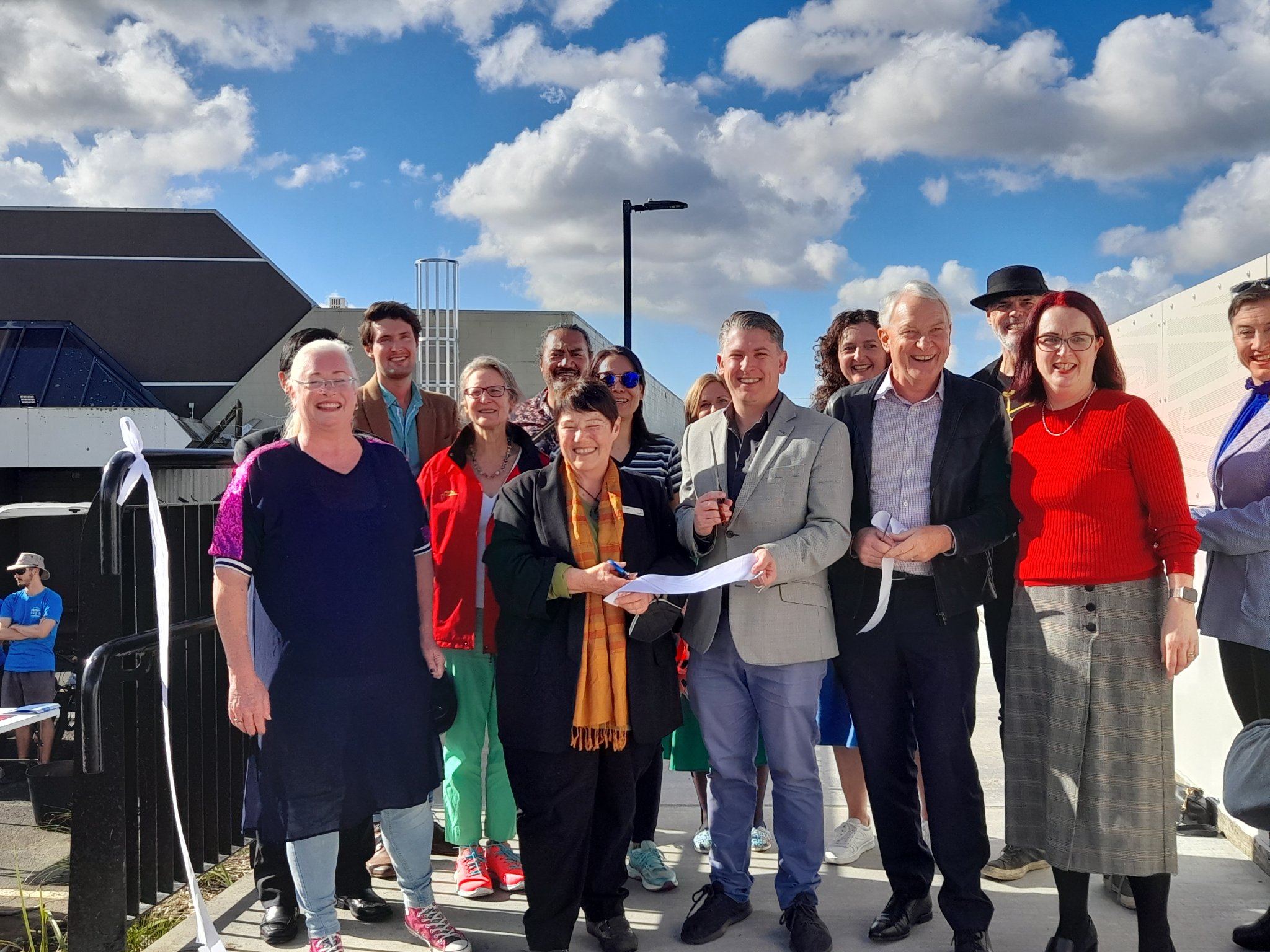
Te Ha Noa Victoria Street Linear Park
First proposed in the City Centre Masterplan in 2013 the section is now intended to be completed by the time the City Rail Link tunnel opens around 224/2025.
The first preparatory works have started and it’s great to see the designs now feature a proper, vertically-separated cycleway. This means it is separated from both pedestrians and motorists to make it really clear that this bikeway is not just a wider footpath.
This west-east axis will add a lot to the usefulness of existing paths such as the Nelson Street bikeway. This will allow people to connect safely to many more places creating a network, not isolated facilities.
Central Auckland cycle paths
Work for the Great North Road upgrade project will start in the coming months. The upgrade will add consistent bus lanes and protected cycle lanes from Grey Lynn to the City Centre. This work will link the K Road bike lanes.
Works are expected to start in the second half of this year. Again, this is an Urban Cycleway Programme-origin project that has taken FAR too long to get where it is at. But on a positive note, Auckland Transport is actually re-allocating some road space (removing flush medians and car parks), rather than trying at enormous cost to retain everything status quo.
Linking south Auckland
The State highway 1 Papakura to Drury project has been funded by our government as part of their Covid economy infrastructure funding boost. Although these types of projects often come with good cycleway infrastructure, the majority of funding is earmarked for more motorway lanes.
One constraint is that due to the bikeways being located outside of the original motorway designation. What this means is they will only be able to be constructed / completed some years after the new motorway lanes are completed. However, the funding has been allocated and the design is underway. Once built there will be a continuous off-road path all the way from Takanini to Drury.
Currently, we are regularly meeting with Waka Kotahi New Zealand Transport Agency to ensure the design is as good as we can make it. We still have concerns about the need to cross at-grade, at multiple signals at some of the future interchanges. From a recent meeting, we are pleased to be able to report the majority have been changed to be bridges or underpasses.
East Auckland cycle path progress
The recently opened Eastern Busway from Panmure to Pakuranga also came with properly separated cycleways east of Panmure Bridge. The proposed onward extension of the busway all the way to Botany Town Centre will extend these separated bike lanes. Finally giving this car-centric part of Auckland a first glimpse of what good public and active modes of transport can look like.
However, it is another example of “trying to have it all” at enormous cost. The projects won’t take away any car lanes and they have to buy hundreds of properties along the route for a much wider road.
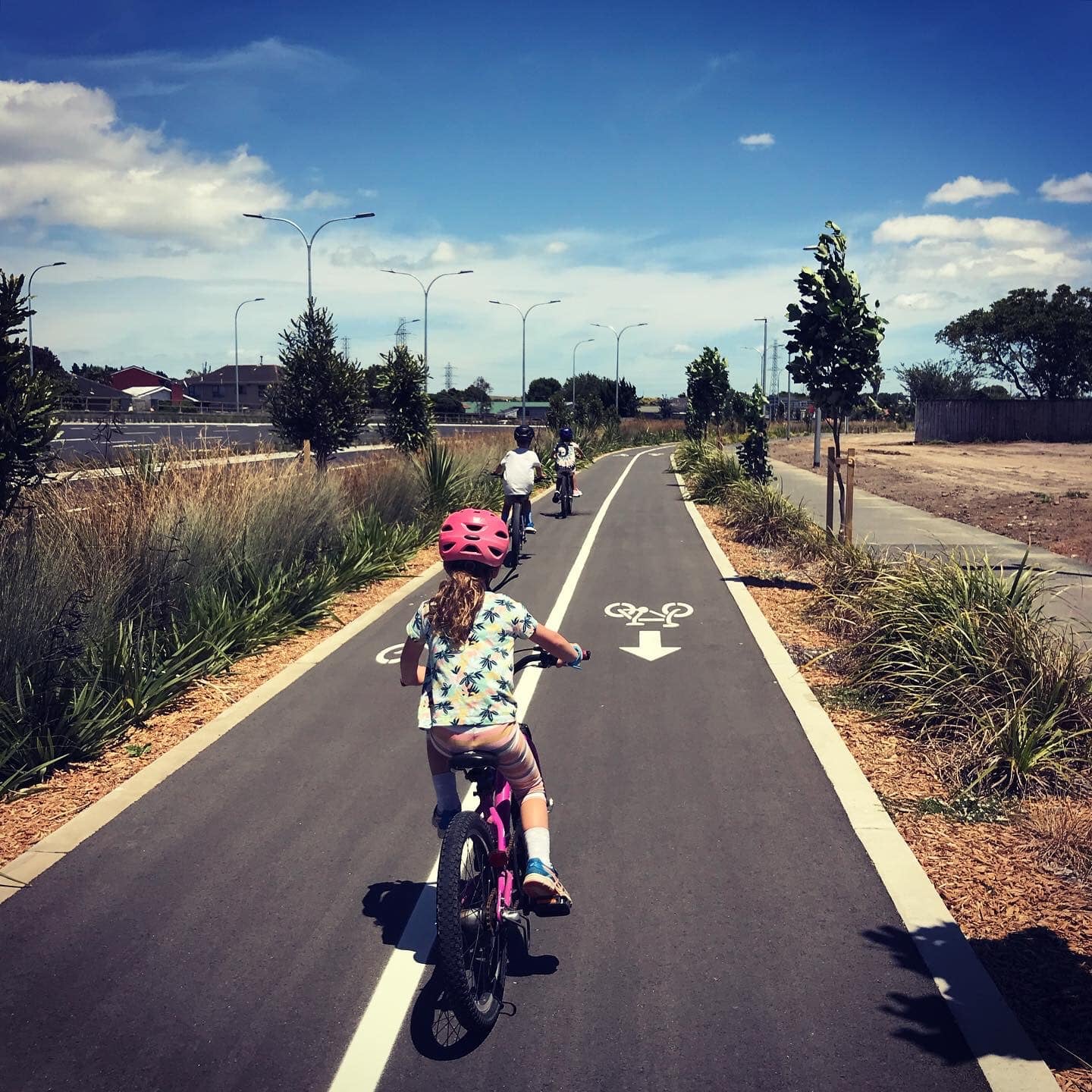
Although the project will generate high-quality facilities it means we can create change only at very high per-kilometre costs, at slow speeds and still have issues. An example of this is at the proposed Gossamer Drive side road design. The new traffic intersection for the road / busway takes up all the space on Gossamer Drive for cars. Except for some tiny footpaths on each side. How are people from the surrounding suburbs to reach the fancy new bikeway when all the safe space is eaten up by new car lanes even in such a project?
Bike Auckland has been advocating and meeting with agencies on this, but there’s no certainty yet that this will be solved by day one of the new busway / road opening (which will be several years away in any case).
Safer streets
Auckland’s safer speed programme rolled out about one-and-a-half years ago and has had great safety benefits for the City Centre (and the other roads across Auckland covered by it). With significant reductions in deaths and serious injuries on these roads even without physical changes. In contrast, across the rest of Auckland deaths actually kept increasing.
However, at the time the speed changes were rolled out across Auckland City Centre, it was decided to reduce speeds on Nelson St, Fanshaw St and Hobson only slightly. Instead, several million were set aside for active-mode focused safety works.
Two years later, Auckland Transport are still going through workshops and design exercises as to what to do. They have announced that larger-scale changes, including a new bikeway along Fanshaw St, are “out of scope” and unable to be funded from the project budget. Changes will be more limited, such as potential new pedestrian crossings, or raised-platform intersection designs to make intersections safer.
Glen Innes cycleway
The first works on the “Links to Glen Innes” cycleway projects have begun. Once finished the project will add bikeways radiating in and out from the Glen Innes Town centre. Both connect to the Glen Innes to Tamaki Drive spine bikeway and will be great for local trips.
Bike Auckland’s infrastructure group has weighed in on the most recent design-related feedback exercise. We have pointed out various aspects that we want to see improved further. For example, the bikeway where it is being crossed by the Merton Road supermarket car park access.
Northwestern Path
Works on the “Kingsland Separation” are proceeding. Bike Auckland and Newton Primary School instigated a project to provide separated space for pedestrians and cyclists. Given the Northwestern Path is our second-busiest bike route, the improvements are important.
The works are still ongoing, but large sections are already functionally complete.
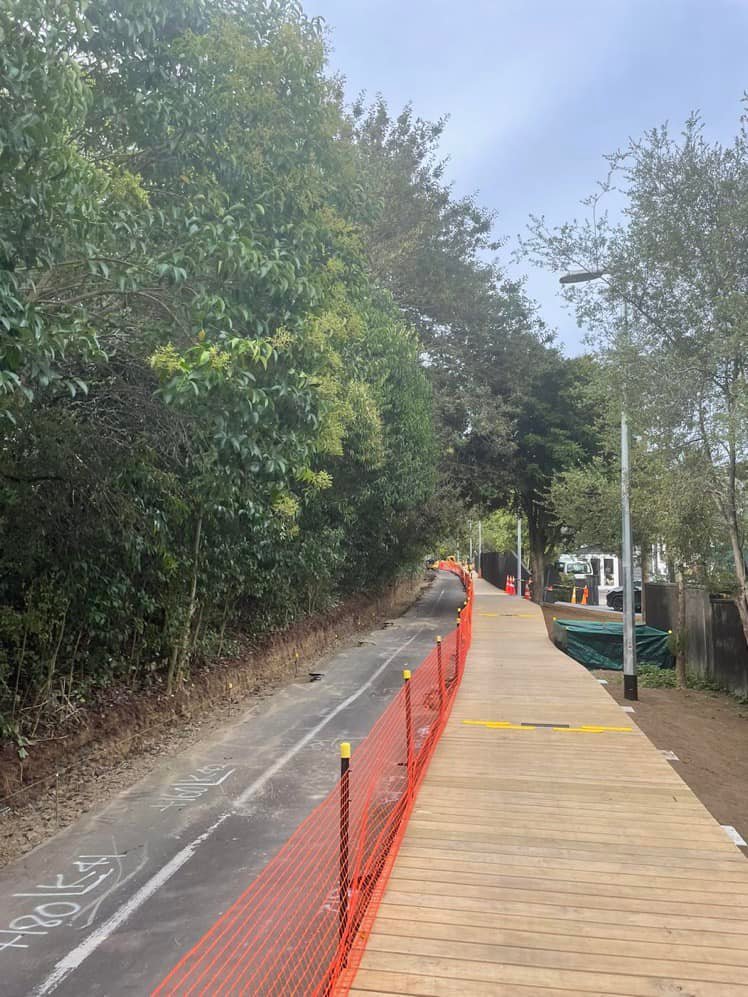
Three Kings update
As part of a safety-focused project, two key intersections of Mt Albert Road and the Three Kings town centre are being upgraded. However, at the time they were consulted, Bike Auckland was shocked to see essentially no bike facilities being included. This, despite Mt Albert Road being a core route on the planned bike network.
The challenge in this situation is we also know how hard it is to “go back” and redo a street project. Local residents and retailers would unsurprisingly be very aggrieved if a few years after they finally were completed, the bulldozers came back to rip things all up again and add bikeways.
The good news is that eventually, our escalation of the matter with AT and the public’s feedback, driven by our blog led to a change in AT’s design. There will be bikeways added at the Frost Road intersection, and in the Three Kings town centre.
The slightly more sobering news is that the town centre bikeway section will be short and not very generous (but at least not a shared path). The main reason given for that was, “We had already consulted on the amount of car parking being removed”. Very frustrating. But at least it is a foot in the door, rather than people on bikes being left out in the cold.
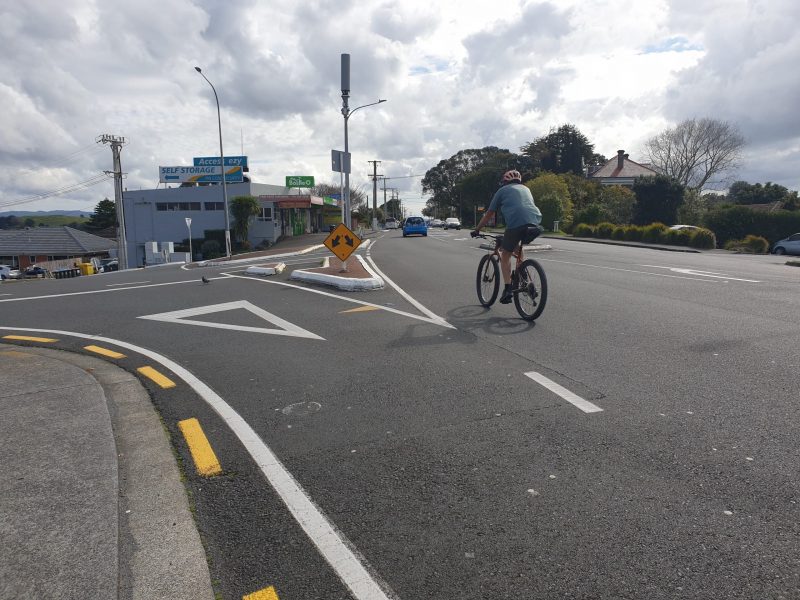
Mission Bay celebration
We’ve left the best for last with a wonderful success at Mission Bay on Tamaki Drive! The Initial proposal met a lot of fierce resistance from some in the local community. Auckland Transport went back with a second consultation and were able to get local buy-in. And are proposing a pretty good bikeway through the town centre!
While we were surprised AT even offered the question “shared path or separated path?” The good news is the final design includes proper separation over almost the entire length. Not only that, AT also listened to our technical feedback regarding the central section at Patterson Ave intersection.
This led to a massively widened footpath space at the bus stops. While contrary to our suggestion, this section remains a shared path, it is now several meters wider making it much more cycle friendly. A great outcome for Mission Bay, and an example of the bikeway that should be rolled out across so many more of our town centres.





